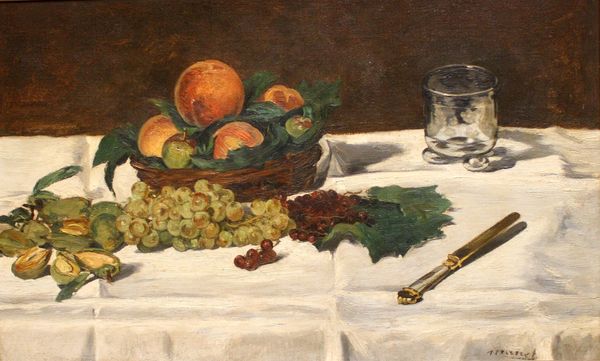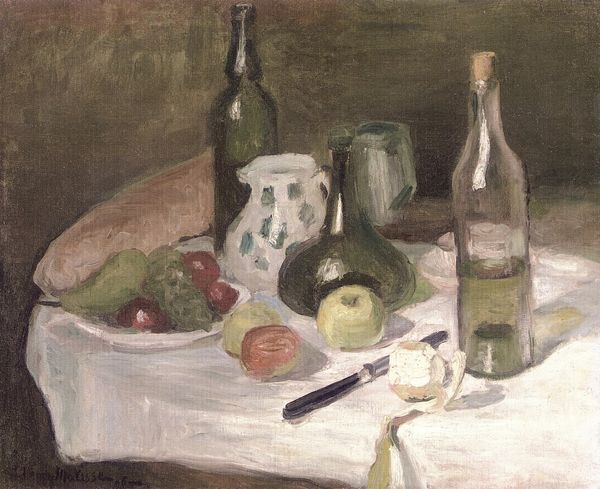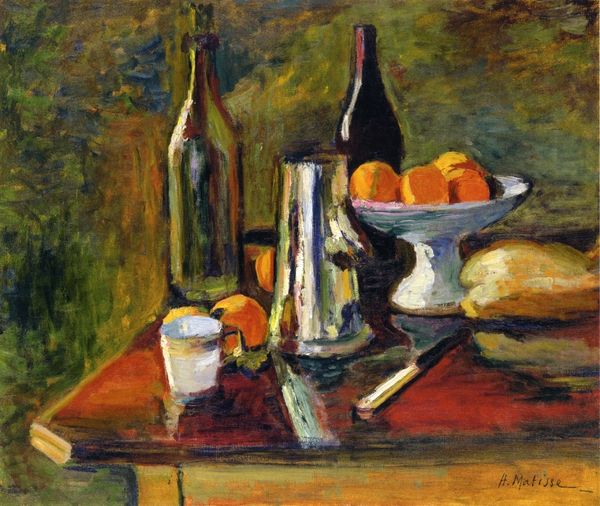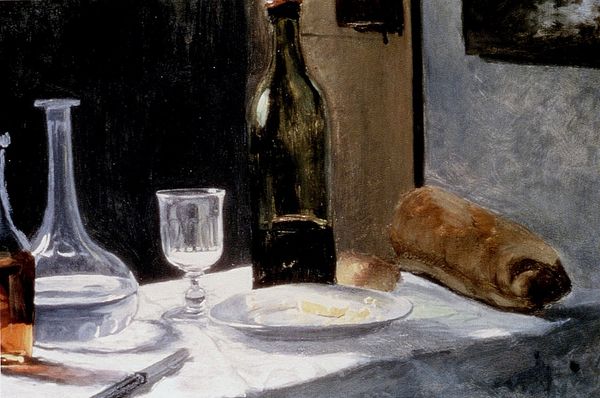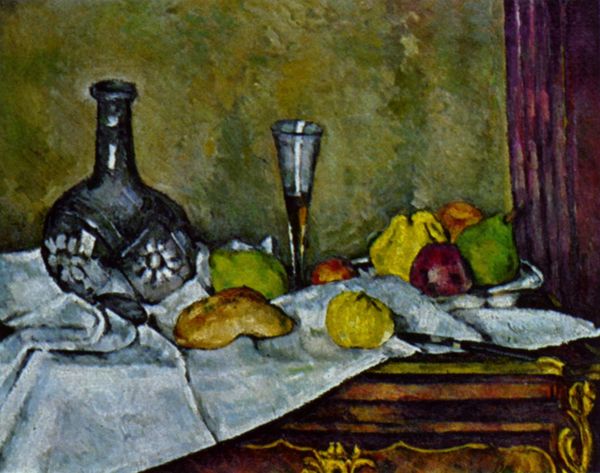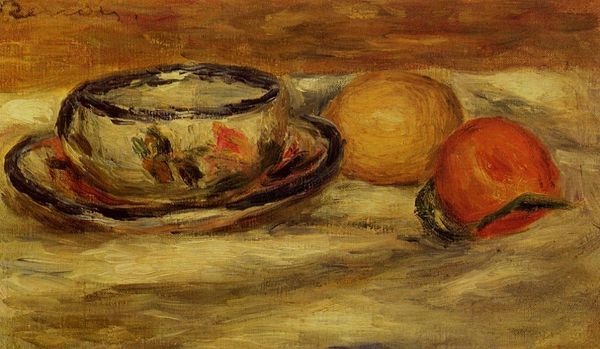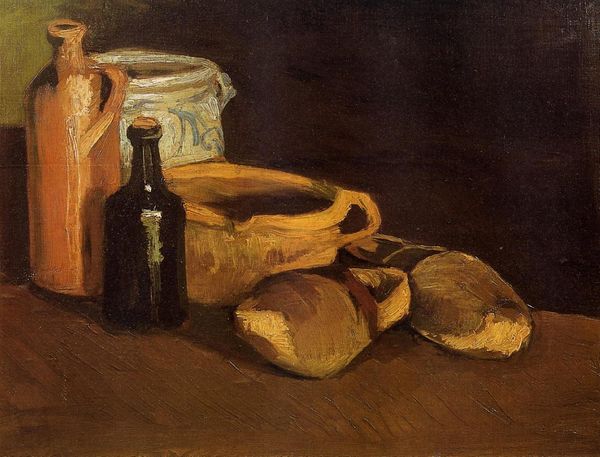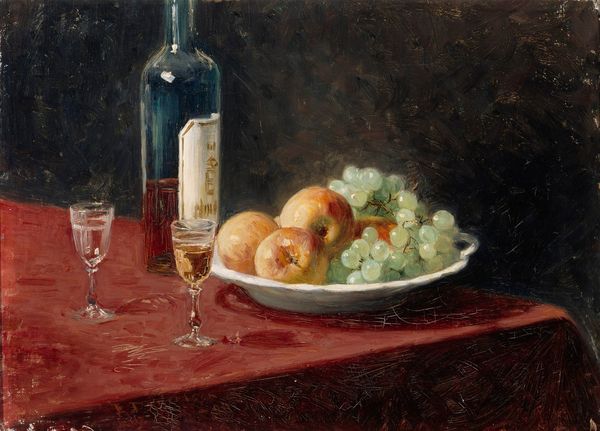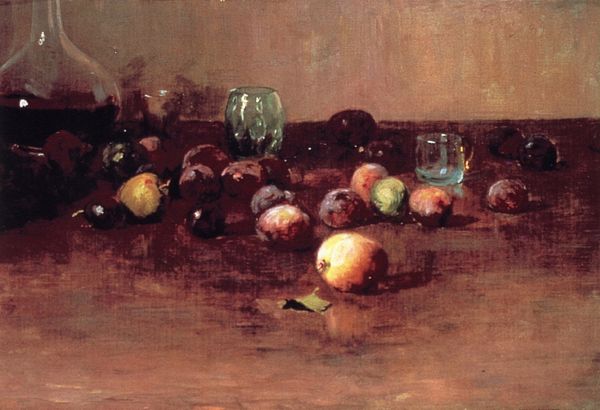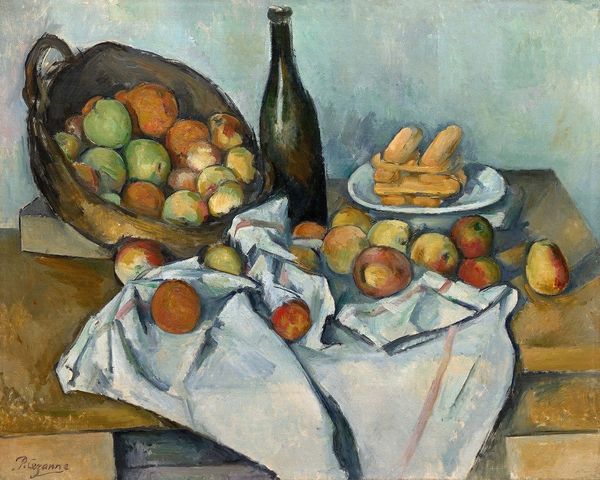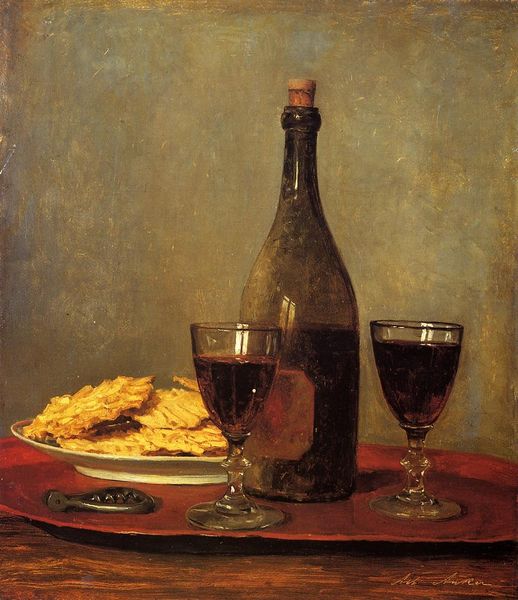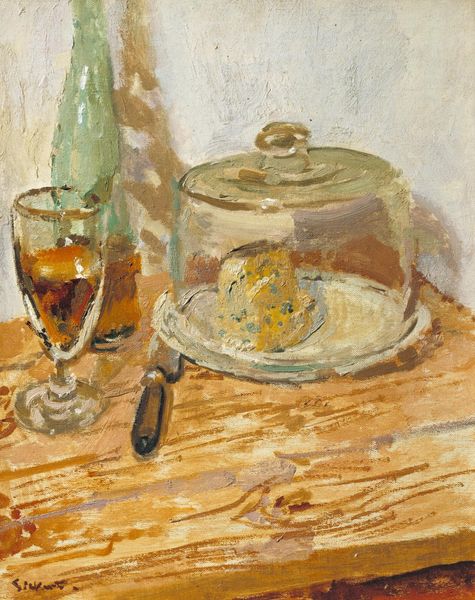
Copyright: Public domain
Editor: This is Renoir's "Glass of Wine," painted in 1908 using oil paints. It feels very simple and domestic. Just looking at the bread, wine, and the carelessly placed knife on a draped table. What do you see in this piece beyond just a still life? Curator: I see a subtle commentary on class and leisure in early 20th century France. Renoir, despite his focus on beauty, was not oblivious to the societal structures around him. This isn’t a lavish feast, but a simple, intimate scene – perhaps a snapshot of a middle-class enjoyment of domestic comforts. Consider the role of wine. How does the drinking culture of the era, and even today, position the imbiber within a certain social status or identity? Editor: So, you are suggesting this is more than just a representation of objects; it represents people's lifestyles and choices? The unadorned bread also feels significant somehow. Curator: Exactly. Think about bread as a symbol. It's sustenance, certainly, but also tied to labor and everyday life, particularly for working-class communities. The glass of wine alongside bread sparks conversations about accessibility, leisure, and maybe even gender roles, since these intimate moments would be shared or enabled by someone – often a woman managing the household. It’s about investigating the socio-economic conditions of that time reflected through commonplace objects. What impact do you believe Renoir was trying to make on the viewer? Editor: It gives me so much to think about! I definitely saw the painting differently at first, but now I think it opens questions about what simple pleasures were available to different classes in Renoir's time. Curator: Precisely, and it reminds us to consider how even seemingly simple representations are laced with social, political, and personal meanings that expand our interpretations. It’s fascinating how art can prompt us to look deeper.
Comments
No comments
Be the first to comment and join the conversation on the ultimate creative platform.
